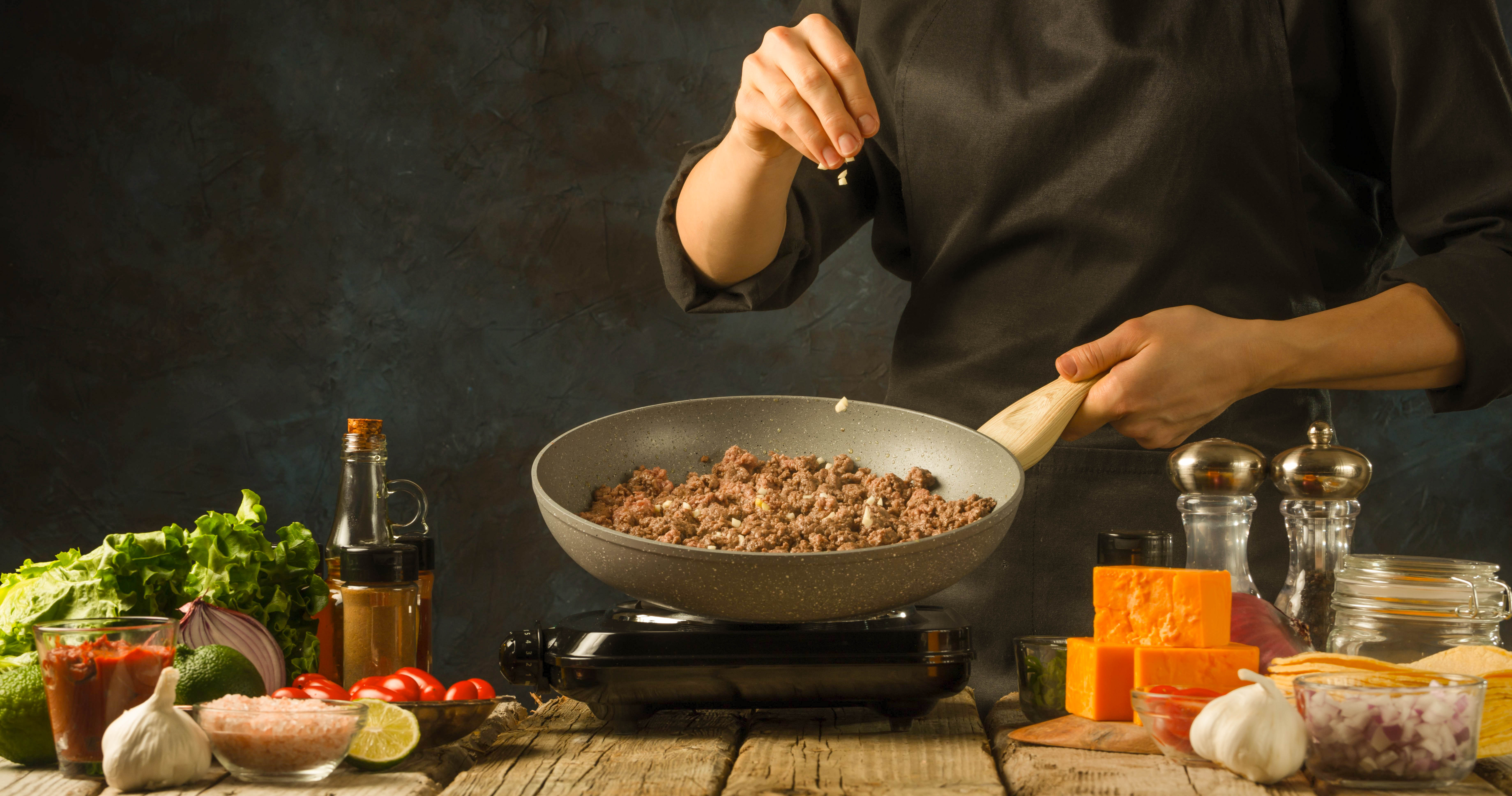Top tips - cooking with mince
.jpg?w=1281&h=675&ext=.jpg&width=1360&resizemode=force)
Versatile and budget-friendly - there's so much to love about mince.
Minced meat can be used for dishes like burgers, meatballs, shepherd’s pie, chilli con carne and tacos. There is no reason to view it as a lesser cut of meat; it is simply meat that has been put through a mincing machine to break it down into smaller pieces. You can get many different types of mince, from beef, lamb, and pork, to turkey, and some of them, like beef come in a range of qualities.
The percentage of fat is generally on the label in a supermarket or butcher’s shop so it allows you to be more health conscious in what you select. A good tip is to buy a smaller amount of leaner (and better quality) mince and bulk up your dish with vegetables.
Watch Chef Diarmuid Ó Mathúna, of Pota Cafe show how to cook, store, freeze and thaw mince correctly.
Here are some healthy recipes with mince from safefood's nutritionists.
Although it’s easy to cook with mince, there are a few key points worth remembering, so we’ve compiled a Q&A below which covers the questions we are asked most frequently about the correct way to store, cook, freeze and defrost it.
If I see brown or grey mince in the supermarket fridge, has it gone off? Is it safe to eat?
Fresh minced meat can change colour from a bright red colour to a brown-grey colour during its shelf life. This is a natural process and a brown-grey colour under the surface does not mean that the meat is gone off or unsafe to eat. If the mince is within the ‘use by’ date, and has been stored properly in the fridge, then it should be ok to eat once cooked thoroughly.
What is the correct way to store mince?
- Minced meat should be kept refrigerated (5°C or less) at all times until cooked thoroughly and consumed.
- When transferring mince from the supermarket to the home, ideally store it in a cooler bag or cooler box. If you do not have a cooler bag/box, make sure you put the mince into the fridge/freezer as soon as you get home. Remember, bacteria present in mince can double every 30 minutes at room temperature
- Store raw mince away from cooked or warm foods. Warm food, such as a cooked chicken, can increase the temperature of the mince and bacteria present on the mince can grow
Tips on storing mince
- Wrap the mince so that juices are not dripping on other foods because mince juice can contain food poisoning bacteria which can cross contaminate other foods making them dangerous to eat if not cooked thoroughly
- Store raw mince away from fruit and vegetables especially those that will be consumed without cooking
- Do not leave mince in a hot car
- Keep fresh mince and mince juices away from all other foods during preparation
- Mince juices can contain dangerous bacteria so store in a way that the juices will not be able to come in contact with other foods e.g. Store mince in clean sealed containers on the bottom shelf of the fridge, so it can’t touch or drip onto other food
How do I cook mince correctly?
Minced meat must be cooked thoroughly, all the way through. Remember, while a steak only has bacteria on the surface, with mince the surface has been mixed all the way through. If you only cook the outside of a burger, the bacteria in the centre may still cause food poisoning. This is also the case for all other minced based foods. So to avoid food poisoning, cook mince thoroughly – don’t take any chances.
Tips on cooking mince
- If you're cooking a very large dish, such as a lasagne, check the temperature in a few places, because some parts of the dish may not be as hot as others
- Mince should not be eaten raw
- Use separate utensils for raw or partially cooked mince and cooked mince.
- Wash your hands thoroughly before and after handling mince
- If you have a meat thermometer you can check the meat is safe to eat by inserting a clean thermometer probe into the thickest part of the dish and checking the temperature has reached 75ºC.
Can mince be frozen?
Yes mince can be frozen. Do not refreeze raw mince. If mince has been thawed, cooked thoroughly and cooled, it can be frozen again.
Tips on freezing mince
- Freeze mince before the ‘use by’ date
- Check the label for any specific freezing or thawing instructions Defrost meat by thawing it on the bottom shelf of the fridge on a plate away from other foods
- When mince thaws, lots of liquid can come out, which can spread bacteria to any food, plates or surfaces that it touches. Keep the meat covered so that it can’t touch or drip onto other foods
- Only defrost mince in the microwave if you're going to cook and eat it straight away
- Cook mince within 24 hours of defrosting
What do I do with leftover cooked mince?
When you have cooked mince and you’re not going to eat it straight away, cool it as quickly as possible and then put it in the fridge or freezer.
Leftovers should be put in the fridge within two hours of cooking, and eaten within three days.
Remember, never reheat foods more than once.




